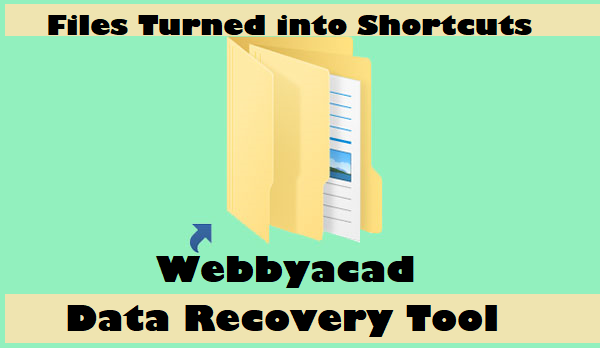Have any of your storage devices’ files or folders become shortcuts? This article will define a shortcut virus and propose three straightforward techniques for dealing with files that have been transformed to shortcuts.
I recently scanned a large number of documents, which opened up well on a USB drive. When I plugged the USB into my laptop today, all of the files on it were instantly labeled something. LNK? I can’t open any of them.
Identifying short-cut versions of original files
Did you encounter the same issue when opening files on your pen drive, USB drive, or other portable storage device? When you tried to access stored files, they suddenly became shortcuts. What is the source of this problem, and how can I files turned into shortcuts that have been transformed to shortcuts? This post provides three practical strategies to help you regain access to your files and folders.
How did your files end up as shortcuts? In general, shortcut viruses or malware cause damage to your drives. You connect an external storage device to your Windows PC, such as a USB flash drive. Regrettably, all saved files and folders with extensions are turned into shortcuts. As a result, you can’t open or access the original files.
Despite its appearance, the shortcut virus just hides your files rather than fully destroying them. In other words, even if your files appear to be shortcuts, you can still get to your important data.
Tell your friends about it now that you have a list of files that have been converted to shortcuts!
By revealing hidden files, you can resolve shortcuts made by files.
As previously said, the shortcut infection covers your actual files rather than deleting them. As a result, you can use File Explorer to specifically display hidden files. This is how you go about things.
Is there files turned into shortcuts what happened or How to Fix it?
Step 1: Locate the Start button in the bottom-left corner of your screen. To begin, locate and launch the Control Panel.
Step 2: Select Appearance and Personalization from the Control Panel’s left column.
Step 3: A variety of options should display. Select the File Explorer Options option. Under this option, choose Show hidden files and folders.
Step 4: Click View and scroll down to reach the Advanced settings.
Step 5: Under Hidden files and folders, make sure the box labeled “Show hidden files, folders, and drives” is checked. To finish the setup, click OK.
Return to your hard disk; are all of your files and folders now accessible? If it doesn’t work, try the technique below. Repair files that CMD generated shortcuts for. The chkdsk command prompt is an excellent tool for troubleshooting a variety of computer issues. The methods outlined here can be used to repair files that have been converted to shortcuts using command lines.
1: Make sure your Windows computer and external hard disk are correctly connected.
2: Go to the Start menu and put cmd into the search field. The Command Prompt should appear in the output. You should right-click the Command Prompt and select Run as administrator.
3: Enter the following commands into the command prompt panel and press Enter.
4: To exit the Command Prompt, type exit and hit Enter.
5: Examine the portable device to see if the shortcuts have been converted to viewable files.
Are you able to successfully access and view your files and folders?
Why not make the tips available to more people?
To repair files that have been turned to shortcuts, use antivirus software.
As previously said, shortcut viruses or spyware cause your files or folders to become shortcuts. If the first two methods stated above do not work, using anti-virus software is one effective option to troubleshoot this issue. In addition to typical antivirus software, there are programs designed specifically to deal with shortcut infestations. Shortcut Virus Remover and Shortcut Virus Fixer are two of the most popular.
Data recovery after a quick viral attack
One possibility is that the saved files and folders remain unreadable even after the antivirus tool has removed the shortcut malware from the drive. Worse, it’s possible that some files are missing. In this circumstance, data recovery becomes absolutely necessary and urgent if you have valuable data.
Webbyacad data recovery tool is a professional data recovery solution that can recover data from USB drives, hard drives, and SD cards. It also scans the hard drive. This data recovery software may restore lost or hidden files and folders caused by shortcut malware. After connecting your drive to your computer, follow the instructions below.
- To begin data recovery, download, install, and run Webbyacad data recovery tool for free.
- Choose between three possible data recovery modules. From this option, select the Data Recovery module.
- To start looking for lost data, choose the external hard drive from which you want to recover data and click Next.
- Filter and preview the scanning results to discover the files you want to recover. After you’ve chosen them, click Recover. The repaired files should be saved elsewhere.
Please feel free to share this data recovery software with others!
Read some more blogs:
How to Retrieve an Outlook Folder: The Complete Guide


[…] What to Do If Your Files Turned into Shortcuts? […]
[…] Files Turned into Shortcuts […]